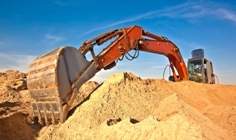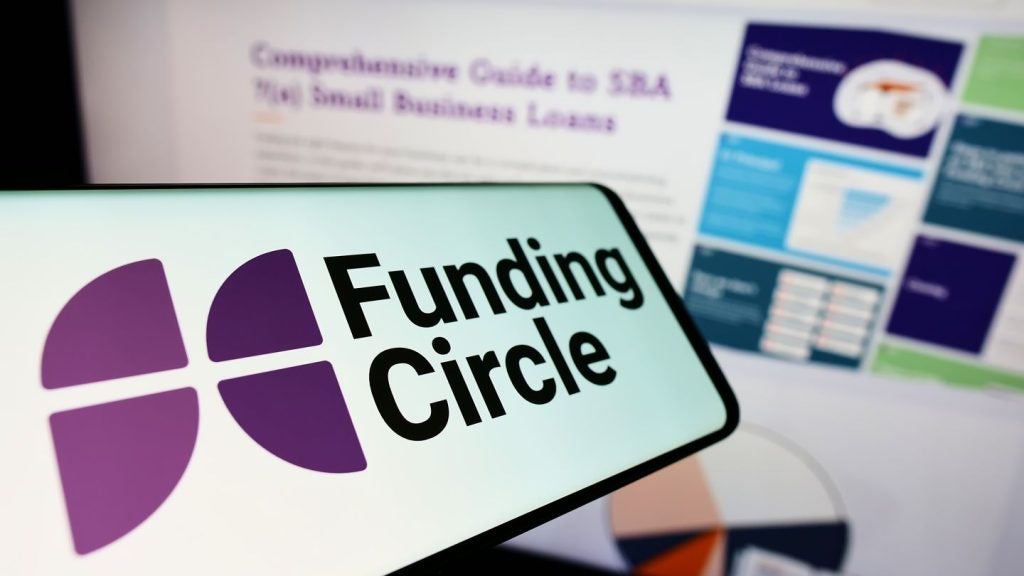
Its sheer size and its ability to influence national economic performance have inevitably established the construction industry as a key market for leasing industry players.
Captive finance companies, independent lessors and bank asset finance divisions operate in the sector, as do some manufacturers with vendor relationships.
For example, Japanese construction machinery manufacturer Kubota has signed an agreement with BNP Paribas Leasing Solutions to support sales financing to dealers and end-users in Europe. DLL cooperates with Hyundai Heavy Industries Europe (HHIE) to support the sales of Hyundai machines.
Financing is offered on assets of various sizes and uses, from mini-excavators to demolitions material handling equipment.
Speaking about the most popular assets at BNP Paribas Leasing Solutions, its head of equipment and logistics solutions international business line Dario Ghislandi says: "On the whole, mini excavators represent the most financed assets in units, while cranes and excavators represent the most financed assets in value. Also telescopic handlers play a major role."
The product portfolio offered by finance companies is very extensive and that drives a broad customer base. Nils Jaeger, president of Volvo Financial Services EMEA and chairman at the Captives Forum says: "At Volvo Financial Services we have deals that go from 30,000 to 30m multi-unit deals."
How well do you really know your competitors?
Access the most comprehensive Company Profiles on the market, powered by GlobalData. Save hours of research. Gain competitive edge.

Thank you!
Your download email will arrive shortly
Not ready to buy yet? Download a free sample
We are confident about the unique quality of our Company Profiles. However, we want you to make the most beneficial decision for your business, so we offer a free sample that you can download by submitting the below form
By GlobalDataCustomers often have a choice of three finance products: finance lease, operating leasing and hire purchase.
Dieter Scheidl, managing director of Raiffeisen Leasing International tells Leasing Life: "In construction finance, plain vanilla finance lease is the dominating product in almost all countries."
Despite a recent increase in demand, operating leases account for a small share of the overall construction finance volumes.
Jaeger says: "Operating lease gained a bit more popularity in recent years but I would say that it’s still not that big in construction.
We also do truck financing and there is far bigger demand for operating lease there."
Paul Jennings, managing director at JCB Finance UK says that people have traditionally avoided operating lease or have not been able to access it.
"Finance companies have not been able to assemble the operating lease quickly and easily at the point of sale," says Jennings.
When financing equipment, some companies also provide a bundle of service offers rather than solely finance products. These added-value services, can include maintenance, parts management, insurance and driver training.
European market performance
The global financial and economic crisis has negatively affected the European construction industry, with the EU-28 index of production for construction declining from February 2008 to March 2013 according to Eurostat. Construction output fell by 26.2% over this period.
Over the past two years, growth was recorded in the European construction output but it’s still to regain its lost inertia. There are variations in performance across the continent, with Western Europe experiencing the highest regional market growth.
Lead economist at Timetric’s Construction Intelligence Center (CIC) Danny Richards says: "The size of the construction industry in Western Europe is still some 14% smaller than it was before the financial crisis, but it is recovering."
Both BNP Paribas Leasing Solutions and Hyundai Finance identify the UK and Germany as their strongest European markets at the moment.
First Independent Finance managing director Allan Ross says there’s been an increase in demand for both new and used construction equipment in the UK.
"It would be very easy to jump to the conclusion that the market is up because there’s more business around. I think the boost in business is due to a higher confidence in the marketplace, with businesses being more comfortable in making investments. One factor that’s been underplayed is that the country is coming out of a recession, therefore many companies which have not replaced equipment for some time are now doing so," says Ross.
The CIC finds that Eastern Europe suffered two consecutive years of decline in 2014 and 2015, with Russia’s demise having an impact on other markets in the region.
Scheidl at Raiffeisen comments: "The level of investment activity went down from pre-crisis levels by roughly 80%. We have seen a low one or two years ago. We can observe different developments across the region. Those markets with a relatively stable political environment, particularly the EU member states, have some infrastructure programmes; whereas in the Balkans and non-EU markets investment activity is extremely low. There’s a lack of budgets and infrastructure projects in these countries."
Scheidl says Poland is the strongest construction finance market at the moment in central and Eastern Europe, followed by the Czech Republic, Slovakia, Romania and Bulgaria. He highlights that these markets receive international investment and have prosperous GDP growth rates.
The construction industry in the south of Europe has been the worst hit by the economic crisis, with devastating effects on construction-related activities. According to the CIC, Spain has started to show signs of recovery, while the uncertainty around Greece’s economic future acts as a barrier to investment.
Ghislandi at BNP Paribas says Turkey is also a leading market in terms of volumes. The CIC figures show that Turkey’s construction output has been increasing since 2010, but the rates of growth have been very volatile.
Used equipment market
"The environmental obligations and the fast technical evolution of the assets urge European companies to renew their fleet more often. This’s at the heart of a large second-hand market," says Ghislandi.
The used construction equipment finance market has been able to cope with increased supply, as demand has been strong, fuelled by good economic conditions.
"Usually when the economy is performing well, the used equipment market is doing well," adds Volvo’s Jaeger. "I would say that at the moment if you talk to dealers in the construction segment, overall I don’t think they sit on an above average amount of used equipment."
Good performance by the used market can be enhanced by the successful remarketing of repossessed assets.
Scheidl says: "After the crisis there were huge repossession acts by leasing companies. In some countries, companies had to repossess and to store thousands of secondary assets like cars, transportation, and equipment. All those assets have been successfully remarketed. Looking at us and also our competitors, what is known as stock is on a very digestible level."
According to Ross at First Independent Finance, the majority of users who are looking at used equipment are small businesses, because of small budgets.
He says used equipment, particularly older equipment, can be remarketed outside the EU, because of less strict health and safety regulation and less stringent controls around fuel efficiency in the receiving countries.
"In developing countries, older equipment actually has a higher perceived value than equipment which is more fuel-efficient and computerised," Ross explains. "This is because if you take a piece of older equipment into many African countries, fuel doesn’t usually have the quality that modern machines actually need and people don’t have high-tech equipment to repair broken parts," says Ross.
Engine technology is an area which affects the demand for used equipment, creating different trends in different countries.
JCB UK’s Jennings explains: "There’s a new area which is tricky for any finance company and manufacturer and that’s engine technology. It’s important because engine emission regulations are causing differences in demand for different engines. Some engines are only suitable for particular markets causing some issues when trading with used construction assets."
International program manager at DLL Group and the liaison officer between HHIE and DLL, Michel Steijaert says it’s not an easy channel for general lessors.
"The second life market for these assets is growing," says Steijaert. "This is typically an example where Hyundai Finance notices that general leasing companies are starting to structure, but it’s not that easy for them."
Competition
The financial crisis has left its mark on a number of European construction equipment finance markets, changing their structure and degree of competition.
Ross tells Leasing Life he expected that captive finance companies would have reduced their activity in the construction market during that time.
"It was thought during the recession that manufacturer in-house companies would probably have less of an appetite in maintaining these cash-hungry types of businesses because their own manufacturing businesses were slowing down," says Ross. "That didn’t actually happen; in fact the opposite looks the case."
Jaeger says that it is Volvo Financial Services’ strategy to find ways to attract and keep customers, not only over the life of the product but also over the whole business cycle.
A similar strategy was engaged by JCB UK. Jennings explains: "We are not just a fair-weather friend. We remained enthusiastic lenders throughout the recession."
Apart from continuing to provide finance, captives designed products that accommodated the rough financial conditions.
JCB UK introduced HP Plus, a product that allows customers to take a break two months in any 12 months by giving 15 days’ notice.
Access to market
In some markets captive finance companies managed to capture a bigger share of the market since 2008 and the number of independent lessors shrunk.
Describing the competition in Central and Eastern Europe, Scheidl says: "The number of independent lessors has been decreasing over the years. We see captive finance companies and bank asset finance divisions competing with each other. Independent lessors have become very rare."
In contrast, competition in the UK increased in the past five years, as a number of players returned to the market and there was a surge of new entrants.
Ross says: "There was a return to the market of some bigger banks which slowed their activity in the construction market during the recession. I think a lot of challenger banks are entering the market via their broker connections who have been dealing with customers in this market for years."
Jaeger says that there are many players interested in the market due to the fact that the economy is doing well.
"There’s a lot of access to capital, a lot of liquidity out there that needs to be spent. As a result we have more competition than usual," says Jaeger.
Jaeger believes the construction finance market is a tough one to enter and says: "My opinion is that the market is very much distributed and any new market entry probably needs to go with lower return expectations."
The long established relationships of customers with certain market players can be to the detriment of new entrants, according to Ross.
JCB UK’s Jennings also believes it’s difficult for other lessors to gain business from captive finance companies. He says: "If I was a new entrant or a traditional player and I found it easy to get captives business, I would wonder why that’s the case. So I don’t know if it is the quality of credit business that causes captives to share or allow business to leak."
Jennings says that companies trying to rebuild customer relationships or build them from a starting position, have to buy their way in with terms and rates that he considers "not sustainable".
"Some of the new players in particular are anxious to get scale, and we can see that some of the pre-recessionary excesses are beginning to show themselves again, and this really does relate to the terms and not pricing adequately for risk," he adds.
Price pressure in the European market was observed by Steijaert who said: "Hyundai Finance is perceiving price pressure on interest rates again, especially on the straightforward deals with enough collateral value in the deal as a securitisation."
Apart from pricing, Ghislandi believes that added-value services pose a challenge to construction equipment finance firms.
Ghislandi says: "Present-day challenges are not so much on pricing as they are on added-value services that are most appreciated and in high demand by the market. For instance, insurance policies that cover financed assets or the end-user company risks have become an important level playing field, as are technical services offered in agreement with manufacturers (programmed maintenance, scheduled parts supply, warranty extension).
"Of course, challenges deal not only with the offer of products but also with technology innovation on one side and corporate social responsibility on the other," he adds.
Expectations for 2016
"Despite the fact that the market is far from reaching the spectacular numbers of the first 10 years of the new century, we see a general recovery," Ghislandi continues. "In Europe, 2015 showed an increase compared to 2014 and we expect the same positive trend continuing in 2016."
The CIC expects the size of the construction industry in Western Europe to grow by 2% in 2016 compared to the previous year.
"Having suffered contractions in output in 2015, the construction industries in France and Germany will return to positive growth in 2016, while in Spain there will be a continued recovery," says the CIC’s Richards.
The CIC predicts that UK construction output will expand by 3.2%, as government support for infrastructure and housing projects continues.
Ross says that government initiatives will positively affect the UK housing market in the next few years.
He says: "The government is saying that the UK needs a programme to build more houses so I would suspect that the housing market is more likely to do well as a result of government initiatives than the perceived damage that could be done by a bubble perhaps bursting. I don’t see the housing construction market becoming a negative growth area; on balance it seems to be a positive growth area for the next few years."
Government discussions around granting building permissions on brownfield sites are also regarded as beneficial for the market by Ross.
"This could be good news for the construction finance industry, as brownfield often has an element of demolition which often requires more equipment per project," says Ross.
However, Jennings says that we are yet to see the UK government initiatives translate into mass house building.
Despite believing that there’s a healthy UK pipeline in infrastructure projects and a national shortage of homes, Jennings highlights a number of parameters that could have an adverse effect to the growth of the sector.
"I think that things are set fair, but there are some tricky considerations and the first one is the public statements that have been made by several of the major contractors who have suffered major losses," says Jennings. "Some of the press commentary I’ve read is suggesting that payment terms for subcontractors – who use HP and leasing extensively – are getting even longer," Another factor that could affect the UK construction sector is supply chain costs.
Jennings explains: "The builders are increasingly hit by supply chain costs on either materials or labour costs and shortage of skills.
So even if we get our act together as a sector we’re likely to find that there are some constraints and it’s difficult to predict how they are going to be solved."
Overall Jennings predicts the situation in the UK construction market to be fair in the medium to long-term.
However, positive growth in construction output and finance is not expected for all the countries of the continent.
In Eastern Europe the environment is very uncertain, especially with the sanctions against Russia.
The CIC anticipates that the construction industry in Russia will contract further in 2016 in real terms, with the weak economy and low oil prices continuing to curtail investment growth.
"Nevertheless, other major markets such as Poland and the Czech Republic will expand, contributing to growth of 1.6% for the region as a whole in 2016," adds Richards.
Scheidl expects that Poland, the Czech Republic, Slovakia, Romania and Bulgaria will witness growth of 2-3% hand-in-hand with the GDP forecast rates. "I would say that all other markets in the region will have flat development," he says.
Scheidl is optimistic that the Central and Eastern European region can return to the 2008 levels, but he anticipates that it will take some time.
"It will be a slower growth but also more healthy and sustainable," Scheidl says. "We saw the results of a growth which was unhealthy, not really digestible and skyrocketing. What we expect is a more realistic growth and a more reasonable approach from all market participants."
The CIC forecast on construction output value of 20 European countries between 2016 and 2020 shows that Poland will have the highest annual average growth. According to the CIC, Poland will see its construction output value rise by 3.7%, while in the Netherlands and Ireland it’s expected to rise by 3.5% and 3.3% respectively.
In major markets anticipated annual average growth in construction output value is 3.3% for Spain, 2.6% for Germany, 2.4% for the UK and 1.4% for France.







